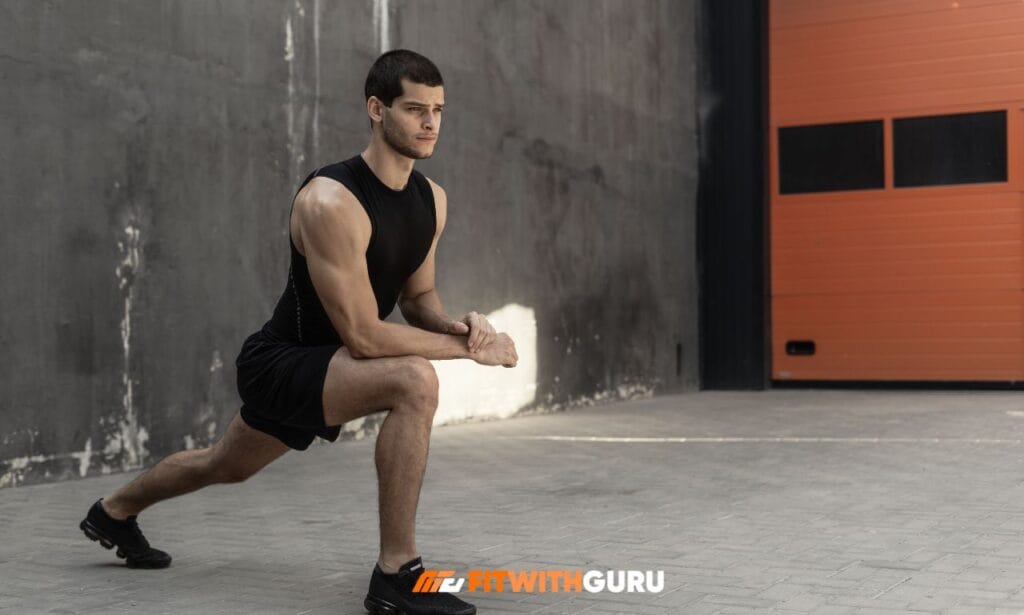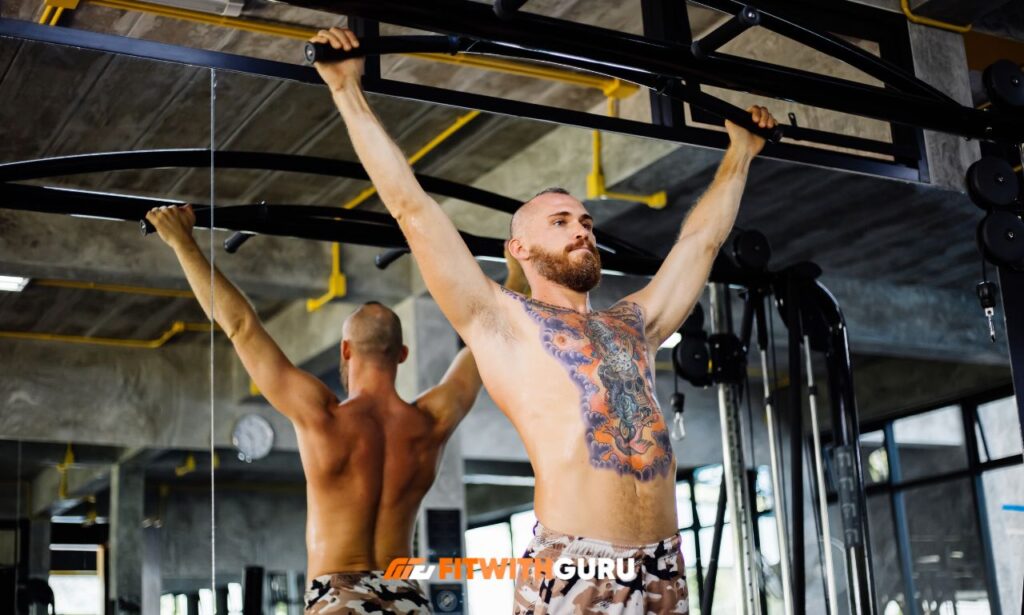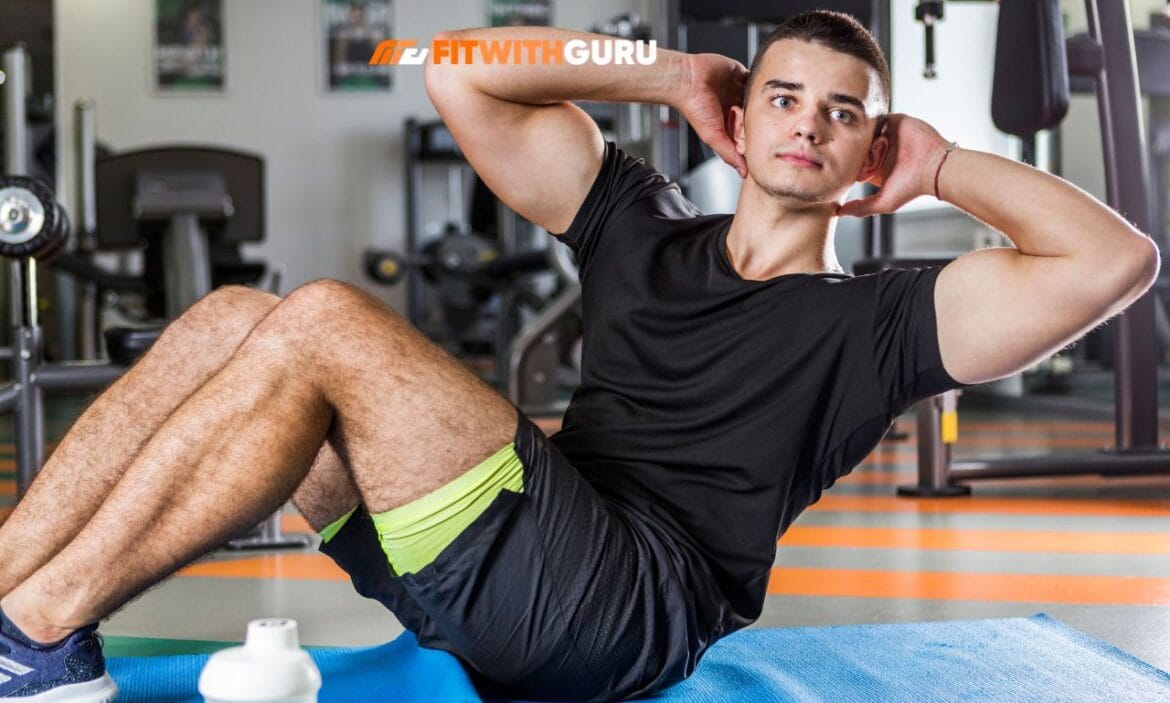The hardest bodyweight Exercises routines challenge every muscle fiber in your body without requiring a single piece of equipment, and they’re perfect for transforming your fitness journey right in your living room. I remember the first time I attempted a pistol squat in my cramped apartment. My legs wobbled like jelly, my balance betrayed me, and I crashed onto the floor with all the grace of a baby giraffe learning to walk.
That humbling moment taught me something crucial: bodyweight exercises aren’t just about strength—they’re about coordination, balance, mental resilience, and the willingness to look absolutely ridiculous before you look incredible.
Why Bodyweight Training Deserves Your Respect
Bodyweight training represents one of the most underestimated forms of exercise in modern fitness culture. While gym-goers chase heavier dumbbells and more impressive plates, bodyweight enthusiasts understand a fundamental truth: controlling your own mass through space requires extraordinary strength, body awareness, and functional fitness that translates into real-world movement patterns.
The hardest workout at home doesn’t require fancy machines or monthly memberships. It requires only your body, gravity, and the determination to push beyond comfortable limits.
The Foundation: Understanding Progressive Bodyweight Training
Before diving into the hardest bodyweight Exercises movements, understanding progression becomes essential for both safety and success. Every advanced bodyweight exercise exists on a spectrum of difficulty, with scaled versions allowing beginners to build the prerequisite strength, mobility, and neuromuscular coordination needed for the full expression of each movement.
The beauty of hard exercises without equipment lies in their accessibility and scalability. A planche might seem impossible today, but with systematic progression through pseudo-planche push-ups, lean drills, and tuck holds, your body gradually adapts to increasingly challenging demands.
Progressive overload in bodyweight training doesn’t mean adding external weight—it means manipulating leverage, reducing stability, increasing range of motion, or adding complex movement patterns that challenge your nervous system in novel ways. This approach builds resilient, functional strength that carries over into every physical activity you encounter.
Exercise 1: The Pistol Squat – Single-Leg Strength Mastery
The pistol squat stands as one of the most humbling yet rewarding exercises in any advanced bodyweight workout plan. This single-leg squat variation requires you to descend to full depth on one leg while keeping your non-working leg extended straight in front of you, parallel to the ground.
The movement demands extraordinary quad strength, ankle mobility, hip flexibility, and core stabilization simultaneously. Most beginners discover their mobility limitations before they encounter strength deficits when attempting pistol squats.
Tight hip flexors, limited ankle dorsiflexion, and weak posterior chain muscles conspire to make this exercise feel nearly impossible during initial attempts.

Progression Strategy for Pistol Squats:
- Start with box pistol squats, where you lower down to a chair or box before standing back up
- Practice single-leg balance holds, extending the non-working leg forward for 30-second intervals
- Use a suspension trainer or doorframe for assisted pistol squats
- Perform eccentric-only pistols, lowering slowly on one leg and standing up with both
- Attempt full pistol squats with progressively less assistance
The pistol squat builds unilateral leg strength that translates directly to improved running mechanics, jumping ability, and injury prevention by addressing strength imbalances between legs.
Exercise 2: The One-Arm Push-Up – Upper Body Dominance
Few exercises command respect like the one-arm push-up, a movement that requires tremendous pressing strength, core anti-rotation stability, and shoulder control. This exercise represents the pinnacle of horizontal pushing strength in the hardest bodyweight workout category.
When you perform a one-arm push-up correctly, your body maintains a perfectly straight line from head to heels while one arm lowers and presses your entire bodyweight.
The challenge extends beyond pure strength—preventing rotation requires intense core engagement, while maintaining shoulder health demands perfect scapular control throughout the movement.
Many people attempt one-arm push-ups by spreading their legs wide, rotating their torso, or elevating their hips, but these compensations reduce the exercise’s effectiveness and miss the point entirely.
Building Toward One-Arm Push-Ups:
| Progression Level | Exercise Variation | Key Focus |
| Beginner | Archer Push-Ups | Weight shifting between arms |
| Intermediate | Elevated One-Arm Push-Ups | Reduced resistance with height |
| Advanced | Negative One-Arm Push-Ups | Eccentric strength building |
| Expert | Full One-Arm Push-Ups | Complete unilateral strength |
The journey to a legitimate one-arm push-up might take months or even years, but the upper body strength, shoulder stability, and core control you develop along the way transform your entire fitness foundation.
Exercise 3: The L-Sit – Core and Compression Strength
The L-sit appears deceptively simple: sit on the ground, place your hands beside your hips, press down, and lift your entire body off the floor while keeping your legs straight and parallel to the ground.
This isometric hold belongs in every advanced bodyweight workout because it builds extraordinary core strength, hip flexor power, shoulder stability, and mental toughness.
The first time most people attempt an L-sit, they discover muscles they never knew existed. Your hip flexors burn with intensity, your abs engage in ways crunches never replicate, your shoulders shake from the unfamiliar stabilization demands, and your wrists protest the unusual load distribution.
Holding an L-sit for even five seconds represents a significant achievement for beginners, while advanced practitioners maintain the position for 60 seconds or longer.
L-Sit Progression Pathway:
Start with bent-knee holds, where you keep your knees tucked toward your chest while lifting off the ground. Focus on maintaining active shoulder depression, pressing down strongly through your hands to create maximum height. As you build strength, gradually extend one leg at a time, alternating between sides to develop balanced compression strength.
Progress to the full L-sit only when you can hold the tucked position for at least 30 seconds with good form. The L-sit directly translates to improved performance in countless other bodyweight skills, from handstands to front levers, making it a cornerstone movement in any serious training program.
Exercise 4: The Planche Lean – Straight Arm Strength Foundation
The planche lean introduces you to straight-arm strength training, a completely different stimulus than the bent-arm exercises most people know. This exercise serves as the entry point to the planche, one of the most impressive gymnastics strength holds imaginable, where you balance parallel to the ground with only your hands touching the floor.
During a planche lean, you assume a push-up position and gradually shift your weight forward over your hands, moving your shoulders past your wrists while keeping your arms completely straight. The farther you lean, the more your shoulders, chest, core, and anterior deltoids must work to prevent you from face-planting into the ground.
This movement doesn’t look particularly impressive to observers, but practitioners know the intense burning sensation that develops after just 10-15 seconds of holding a deep lean.
Planche Lean Training Protocol:
Begin with shallow leans, moving your shoulders just an inch or two beyond your wrists for 10-second holds. Gradually increase the lean angle over weeks and months as your straight-arm strength develops.
Keep your core tight, your hips level with your shoulders, and your fingers spread wide to maximize hand surface area. Practice planche leans 3-4 times weekly, allowing adequate recovery between sessions since the connective tissue adaptation occurs more slowly than muscle strength gains.
The planche lean prepares your body for more advanced variations like tuck planche, straddle planche, and eventually full planche, while building shoulder health and resilience that protects against common injuries.
Exercise 5: The Pull-Up to Muscle-Up Transition – Dynamic Upper Body Power
The muscle-up combines pulling and pushing strength into one explosive movement that takes you from hanging below a bar to supporting yourself above it.
This dynamic exercise represents one of the hardest workout at home movements when you have access to a simple pull-up bar, requiring explosive pulling power, precise timing, and coordinated full-body tension.
Unlike a standard pull-up where you simply pull your chin over the bar, a muscle-up requires you to generate enough upward momentum to transition from a pull into a dip position above the bar.
The transition phase—that critical moment when you shift from pulling to pushing—challenges athletes more than any other aspect of the movement.
Most beginners struggle with muscle-ups not because they lack strength, but because they haven’t mastered the specific technique, including the false grip, the hip pop timing, and the aggressive forward lean needed to clear the bar.

Muscle-Up Skill Development:
Master high chest-to-bar pull-ups before attempting muscle-ups, pulling yourself so high that the bar touches your sternum rather than just your chin. Practice bar dips to ensure you have adequate pushing strength to complete the top portion of the movement.
Learn the false grip, where you position your wrists over the top of the bar rather than hanging from your fingers, which allows for a smoother transition. Use resistance bands for assistance during early attempts, gradually reducing band thickness as your strength and technique improve.
The muscle-up builds explosive upper body power that carries over to countless athletic movements, from throwing to climbing to grappling.
Designing Your Advanced Bodyweight Workout Plan
Creating an effective advanced bodyweight workout requires strategic exercise selection, appropriate volume, and adequate recovery protocols. Unlike machine-based training where you can isolate individual muscles, bodyweight training involves complex, multi-joint movements that tax your central nervous system significantly.
A well-designed weekly training split might look like this:
Monday: Lower body focus (pistol squat progressions, single-leg Romanian deadlifts, shrimp squat variations)
Tuesday: Horizontal pushing and pulling (one-arm push-up progressions, archer rows, pseudo-planche push-ups)
Wednesday: Active recovery or skill work (handstand practice, L-sit holds, mobility training)
Thursday: Vertical pulling and core (muscle-up progressions, weighted pull-ups, hanging leg raises)
Friday: Planche and straight-arm work (planche leans, L-sits, support holds)
Saturday/Sunday: Rest or light movement (walking, yoga, stretching)
This structure ensures adequate recovery between similar movement patterns while maintaining consistent training frequency. Progressive overload in bodyweight training means gradually increasing difficulty through leverage changes, adding repetitions, increasing time under tension, or progressing to harder variations.
Track your workouts diligently, noting which progression you’re working on, how many quality repetitions you achieve, and how the movement feels subjectively.
Common Mistakes That Sabotage Progress
The hardest bodyweight workout movements reveal poor movement patterns and strength imbalances that machines often hide behind comfortable weight stacks and guided paths. Rushing progression represents the most common mistake among enthusiastic beginners who want to achieve impressive skills before building the necessary foundation.
Attempting full planche before mastering planche leans, or trying muscle-ups before achieving 15 strict pull-ups, leads to frustration, potential injury, and wasted training time. Neglecting mobility work creates artificial ceilings on your progress in hard exercises without equipment.
You can’t achieve a full pistol squat without adequate ankle dorsiflexion and hip flexibility, regardless of how strong your legs become. Ignoring recovery between intense sessions causes accumulated fatigue that degrades performance and increases injury risk, since bodyweight exercises stress your connective tissues significantly.
Training the same movement patterns daily without variation leads to overuse injuries and plateaus, while intelligent program design includes sufficient variety and recovery to promote continuous adaptation.
Nutrition and Recovery for Bodyweight Training Excellence
Supporting an advanced bodyweight workout plan requires adequate nutrition, particularly protein for muscle recovery and carbohydrates for training energy. Bodyweight training demands more from your central nervous system than typical gym workouts, meaning sleep quality becomes even more critical for progress.
Aim for 0.8-1 gram of protein per pound of bodyweight daily to support muscle recovery and adaptation. Prioritize whole foods that provide micronutrients essential for connective tissue health, including vitamin C, zinc, and omega-3 fatty acids.
Hydration significantly impacts performance in bodyweight exercises where every extra pound matters—dehydration reduces strength, coordination, and mental focus. Consider timing your most challenging training sessions when you’re freshest, typically earlier in the day before accumulated fatigue degrades movement quality.
Incorporate deload weeks every 4-6 weeks where you reduce training volume by 40-50%, allowing your body to fully recover and supercompensate for previous training stress.
Frequently Asked Questions
How long does it take to master the hardest bodyweight workout exercises?
Mastering advanced bodyweight movements typically requires 6-18 months of consistent, intelligent training, depending on your starting point and genetic factors. Someone with a gymnastics background might achieve a muscle-up within weeks, while others need six months or more.
Can beginners really do these hard exercises without equipment?
Beginners can absolutely work toward these movements using scaled progressions that match their current ability level. The exercises themselves represent advanced goals, but the progression pathways include variations suitable for any fitness level.
How often should I train for an advanced bodyweight workout plan?
Most practitioners achieve optimal results training 4-6 days per week with strategic exercise selection that prevents overtraining specific movement patterns. Unlike bodybuilding splits that isolate individual muscles, bodyweight training involves compound movements that stress multiple systems simultaneously. Ensure at least 48 hours between training the same movement pattern at high intensity, though you can practice skills at lower intensity more frequently.
What’s the hardest workout at home without any equipment?
Many athletes consider the full planche hold the single hardest bodyweight movement, requiring years of dedicated straight-arm strength training to achieve. The iron cross on rings represents another extraordinarily difficult skill, though it requires suspension equipment. Among exercises accessible to most people, the one-arm chin-up often proves more challenging than any other movement due to the pure pulling strength required.
Do I need to be skinny to perform hard exercises without equipment?
While a lower body weight relative to strength makes bodyweight exercises easier from a physics perspective, practitioners of all body types can develop impressive skills. Carrying extra muscle mass makes movements harder, but well-distributed muscle actually helps with explosive movements like muscle-ups. Focus on progressively building strength at your current weight rather than waiting until you reach some arbitrary body composition.
Conclusion
The journey through the hardest bodyweight workout exercises transforms you physically, mentally, and emotionally in ways traditional gym training rarely matches. These movements demand patience, persistence, and humility as you work through progressions that sometimes feel impossibly difficult.
Every failed attempt teaches you something about leverage, body position, or mental approach that brings you closer to success. The beauty of advanced bodyweight workout training lies in its simplicity—you need nothing but your body, a pull-up bar, and the determination to keep showing up even when progress feels glacially slow.
Start with appropriate progressions for your current ability level, train consistently while respecting recovery needs, and trust the process that has guided countless practitioners from beginner struggles to advanced mastery.
Your body possesses extraordinary potential for strength, coordination, and resilience that these exercises will systematically unlock. The pistol squats, one-arm push-ups, L-sits, planche leans, and muscle-ups that seem impossible today become achievable tomorrow through intelligent training and unwavering commitment.
Begin your journey now, embrace the challenge, and discover what your body can truly accomplish when you commit to mastering the hardest bodyweight exercises at home.

